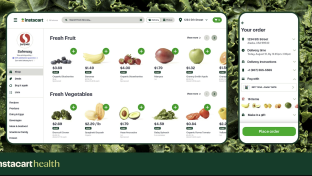Online prices drop for 11th straight month

July marked a continuation of a promising trend for digital consumers.
U.S. online prices in July 2023 fell 1.6% year-over-year (YoY). This made July the 11th consecutive month of year-over-year (YoY) price decreases, according to the latest data from the Adobe Digital Price Index (DPI), based on Adobe Analytics,. On a month-over-month (MoM) basis, online prices fell 0.9% in July 2023.
The July decrease followed the June 2023 decline of 2.6%, the biggest YoY drop in online prices tracked by Adobe since May 2020. Eleven of 18 online product categories tracked by Adobe saw falling prices on an annual basis. July’s YoY online price decline was especially driven by notable drops in categories such as appliances, which fell 8% YoY (down 0.3% MoM), as well as furniture/bedding which fell 3.5% YoY (down 0.7% MoM).
Steeper YoY declines were observed in electronics, which fell 11.7% YoY (down 0.7% MoM) as well as computers, which fell 15.4% YoY (down 1.5% MoM); with the flowers/related gifts category falling the most at 31.6% YoY.
Seven categories experienced YoY price increases, including personal care, pet products, grocery, non- prescription drugs, tools/home improvement, medical equipment/supplies, and apparel.
On a MoM basis, 16 of the 18 categories in the DPI saw prices fall. Price increases were observed in only two categories including groceries and non-prescription drugs.
Although the grocery category has experienced persistent inflation, Adobe has observed YoY price increases slowing for 10 consecutive months. Grocery prices were up 6.3% YoY (up 0.3% MoM), a smaller jump compared with June 2023’s 7.6% YoY and May 2023’s 8.2% YoY increases.
According to Adobe analysis, annual price increases have slowed for pet products as well; Prices in this category were up 6.3% YoY (down 0.1% MoM), compared with an 8.1% YoY increase in June 2023, and an even more substantial 10.2% YoY increase in May 2023.
Notable categories for July 2023 include:
- Groceries: Prices rose 6.3% YoY (up 0.3% MoM) but have slowed in the past 10 months, rising 7.6% YoY in June, 8.2% YoY in May, 9.3% YoY in April, 10.3% YoY in March, 11.4% YoY in February, 12.6% YoY in January, 13.5% YoY in December, 13.7% YoY in November and 14% YoY in October. In September, the rate of price growth peaked, rising 14.3% YoY. Consumers are increasingly buying more of their groceries online, according to Adobe, and this category has generally moved in lock step with the Consumer Price Index.
- Pet products: Prices were up 6.3% YoY (down 0.1% MoM), a smaller increase than the month prior, when prices rose 8.1% YoY (June 2023). In August 2022, prices for the category rose substantially and peaked at 12.7% YoY. This category has seen persistent inflation on a long-term basis, Adobe says, with YoY price increases observed in every month since May 2020.
- Appliances: Prices were down 8% YoY (down 0.3% MoM) after hitting a record low in June 2023, where prices fell 8.3% YoY. Appliance prices online have now fallen YoY for 10 consecutive months, after having risen for 29 consecutive months starting in May 2020, peaking at 7.1% YoY in December 2020.
- Electronics: Prices have continued to fall sharply in recent months, dropping 11.7% YoY (down 0.7% MoM) and 12.9% YoY in June 2023. Contrast this with a year ago, in July 2022, when prices were down 9.3% YoY. As a major discretionary category, Adobe says electronics price movements have a significant impact on overall inflation online.
The Adobe DPI is modeled after the Consumer Price Index (CPI), published by the U.S. Bureau of Labor Statistics and uses the Fisher Price Index to track online prices. The Fisher Price Index uses quantities of matched products purchased in the current period (month) and a previous period (previous month) to calculate the price changes by category. Adobe’s analysis is weighted by the real quantities of the products purchased in the two adjacent months.



